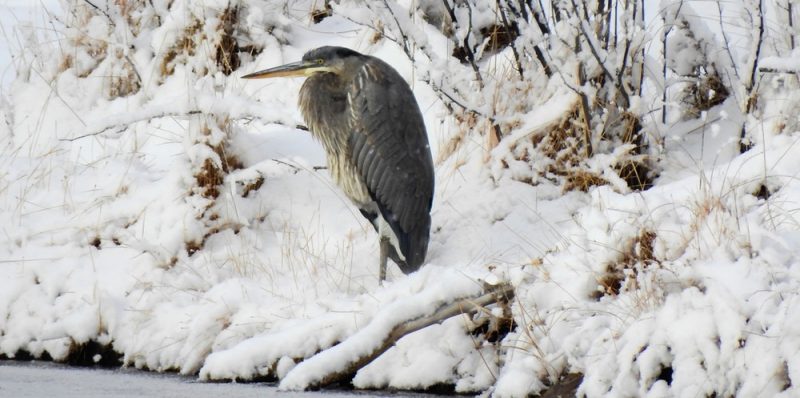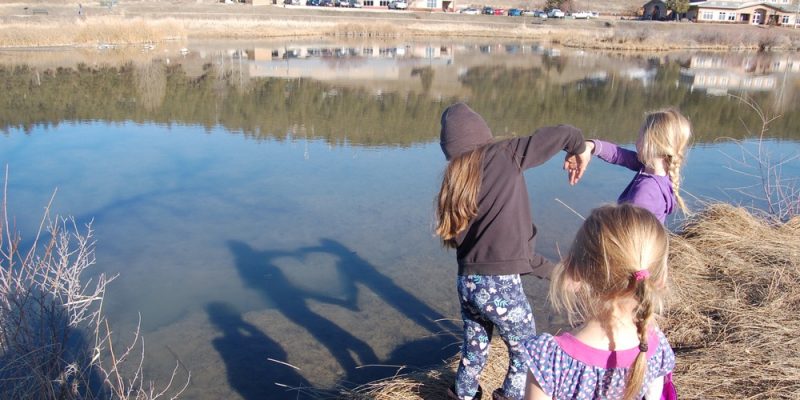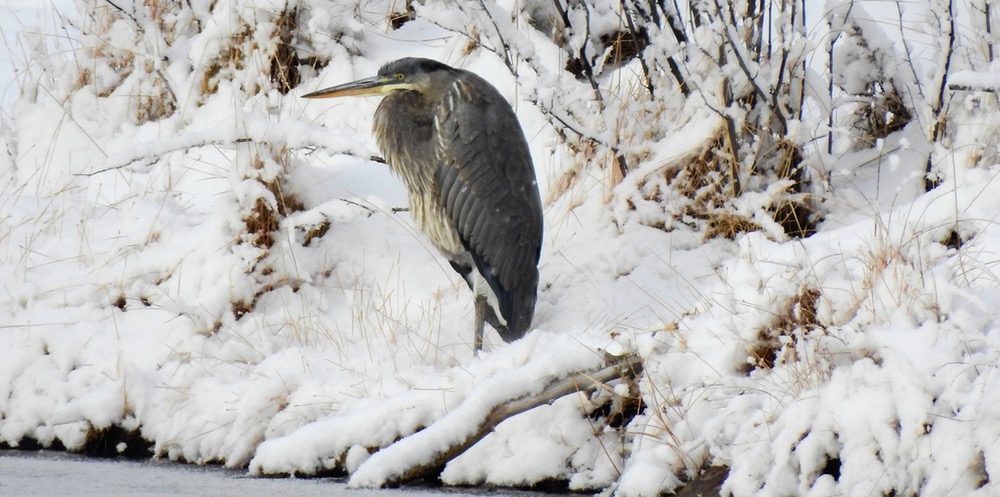If my reading of the County Assessor website data is accurate, the Town government spent somewhere in the neighborhood of $730,000 to purchase the property and easements necessary to run a 10-foot-wide concrete walking trail through a unique wetlands. That price doesn’t include the cost of constructing the actual concrete path, nor the cost of the steel pedestrian bridge at South 6th Street, nor the price of the engineering and other staff expenses involved in the planning stages.
Those expenditures, and that effort, resulted in a fairly unique community experience — an easily accessed wetlands experience for anyone interested in the varieties of Colorado-based and migratory birds who call these wetlands their home for at least part of the year.
According to report delivered to Town Council last month by the Audubon Society’s Pagosa chapter, ‘birding’ tourists can be a valuable economic resource.
National Statistics on Birding Activities
Preliminary findings in a 2016 survey by US Fish and Wildlife Service indicates that there are more than 45 million birders in the US.
The 2011 addendum to the National Survey on Birding and Economics shows that birders annually spend $41 billion on birding trips and equipment. This 2011 Survey indicated that $14.9 billion was spent on food, lodging, and transportation. This survey had data showing that in 2011, 666,000 jobs were created nationally as a result of bird watching expenditures.
Yearly Birding Events
The September 2017 presentation at the American Birding Expo found that the Space Coast Birding Festival generated nearly $1.3 million over 5 days.
The 37th Monte Vista Crane Festival is scheduled March 7 – 9, 2020. Our team member, Dr. Herb Grover, has made preliminary contact with the Monte Vista festival organizers regarding the economic benefits of the Festival. Many others from Pagosa Springs will be attending this amazing festival.
Bottom line: Birding is potentially a large economic driver for communities.

Retired businessman Barry Knot addressed the impacts that subdivision development on adjacent property might have on this particular wetlands, and on the experiences it generates. He indicated the roomful of birding enthusiasts in the room, more than a dozen of whom had contributed to the research presented on February 27.
“My concern is very much like my colleagues here. I care very much about the character of this town. It’s a unique mountain town. It may well be at a turning point in its evolution because of the urban development that’s coming. And that’s a good thing.”
Which is to say, Mr. Knot and many others believe that urban development, which is presumably coming, will have certain beneficial results for current and future residents of Archuleta County. Mr. Knot did not elaborate on what, exactly, those benefits might be.
“But Pagosa has a terrific opportunity now to preserve the things that have made Pagosa unique, for year and years and years.
“And I find myself wanting to be in a town that has that spirit about it. And it’s going to be very interesting, I think, for the Town Council and the planners, to see how we manage urban development that comes in the future.
“When we talk about wetlands, the US hasn’t done a particularly good job with wetlands preservation. Our country has lost over 50 percent of its wetlands over the past century. And even today, we’re still losing wetlands at a rate of about 6 percent a year. At 6 percent a year, in 15 years, they could all be gone.
“Those are fresh-water wetlands. They’re not characterized by the special nature of the wetlands we have here. These are really unique. And if you consider warm-water wetlands as a group unto itself, we’re not talking a loss of 6 percent a year. We might be talking about a 25 percent disappearance, with the destruction of just one warm-water wetlands…
“In Colorado, there’s never been a really good inventory of them done. But recognize the importance and uniqueness of this wetlands, to our community and to our state. And nationally as well.
“We understand what the hot springs means to this town… We think, going forward, the hot springs wetlands can be every bit as important to the economic vitality of this town as the current hot springs [bathing pools] are today. That’s why we’re so interested in protecting them. Not just for the birds, but for the long-term economic vitality of this town.”
My hat is off to the bird enthusiasts who assembled this presentation for the Town Council, and to the Town Council for inviting the presentation and listening carefully to the ideas and data shared by the Audubon group.
As a downtown resident, I’ve often enjoyed the Riverwalk trail through the wetlands since its completion in 2014. A hundred trips, strolling through the wetlands? Maybe two hundred? I can imagine, however, that there are many people living in our “unique mountain town” who have never walked through the wetlands. Some, no doubt, have been working two or three jobs, trying to survive, and haven’t yet found the time to count birds among the cattails.

I’ve often enjoyed writing about our town, and thinking about our town… and wondering what people mean. exactly, when they talk about “economic vitality”… whether they are promoting a $180 million expansion of the Springs Resort complex… or the preservation of a modest wetlands that serves as home to 150 bird species and thus might attract a few of America’s 45 million bird lovers.
Does tourism create “economic vitality”?
Is tourism slowly destroying the very community character that attracted us to Pagosa Springs?
None of our government leaders, and none of our community leaders, seem willing to seriously address those two questions.

